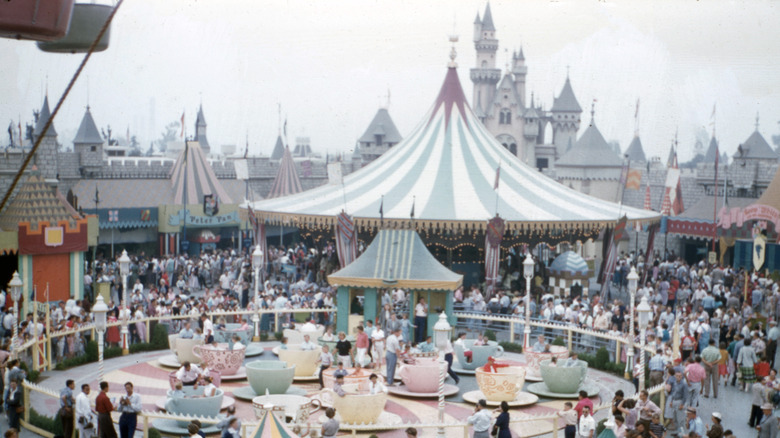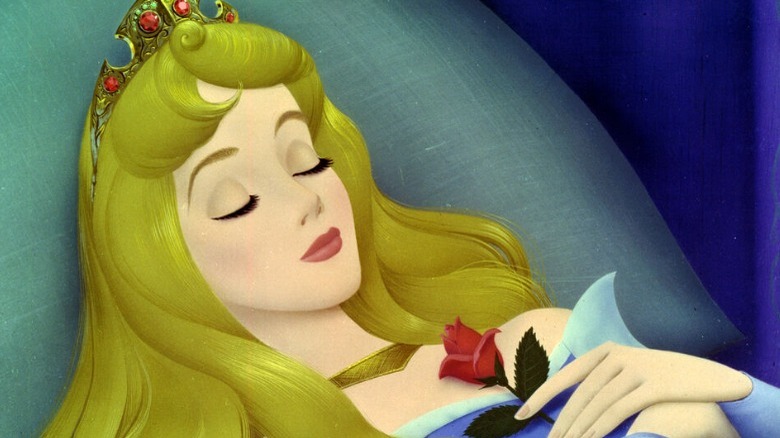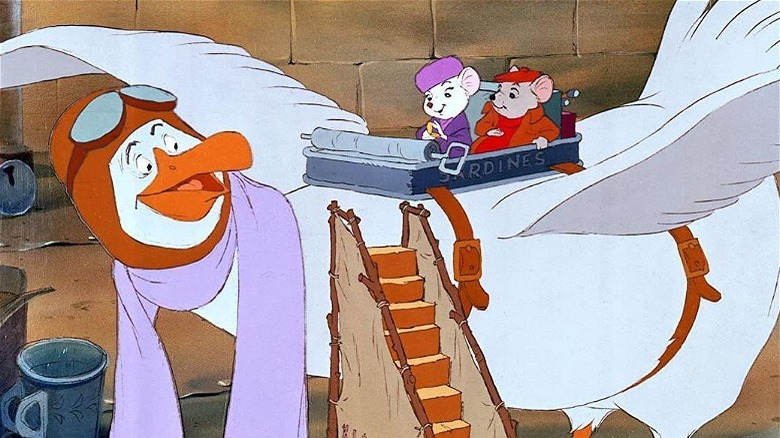
Disney's infamous "Dark Age," the roughly two-decades-long nadir of the film studio, is usually attributed to the death of Walt Disney. However, there's evidence to suggest that Walt's busy dealings with the Disneyland theme park may have inadvertently left his apprentices without a clear understanding of how to find a clear creative direction for Disney Animation.
The road to Disneyland was a long and arduous process, filled with headaches and humiliation for those involved with the project. Trying to launch an amusement park (nay, a theme park!) was an entirely different beast than operating an animation studio. Budgets quickly inflated, local political bodies were hesitant to provide land, and Walt himself was perhaps a bit too ambitious in wanting to debut his dream just a year after construction began in 1954.
The park's opening day went down in infamy as a disaster. People were hopping fences and getting stuck in traffic, concession stands ran out of supplies, and a gas leak almost caused Sleeping Beauty's Castle to go up in flames. Walt Disney nevertheless channeled his energy into making sure Disneyland would remain during and after construction, living in an apartment above the firehouse in the Main Street, U.S.A. section of the park.
Torn Between Dreams

The blood, sweat, and tears that went into making sure the Disneyland dream came true meant that Walt had to juggle park and studio responsibilities. "Sleeping Beauty" was the most significant casualty of this time period, encountering production delays that stalled its release date. Sleeping Beauty's Castle, the centerpiece of Disneyland, was meant to promote the film, but the feature didn't debut until 1959, four years after the opening of the park. It was a box office failure.
Don Bluth, who became an animation pioneer in his own right, started work at Disney right around the opening of Disneyland as an assistant on "Sleeping Beauty." He serves as an eyewitness account to Walt Disney's multitasking, explaining to Skwigly Animation Magazine: "When I arrived in 1955 things were changing quite a bit, Walt was building Disneyland and was kind of disconnected from the animation side of the art so his heart was split in two and he had two worlds he was serving."
In another piece with IGN, Bluth breaks down the time Walt spent on his two projects: "...he [Walt] was working on two things — 'Sleeping Beauty' and building Disneyland. Disneyland occupied, probably, about 80% of his time and we got about 20% of it."
A Lack Of Leadership

Ironically, just as Disneyland was finding its footing, Disney Animation was stumbling down a hill. Following Walt Disney's death in December of 1966, studio management started to become noticeably less organized, even more so after Walt's brother and company co-founder Roy O. Disney passed in 1971. That same year, Bluth returned to Disney Animation and attributed the loss of creativity to a lack of guidance and morale, as per Skwigly:
"...it was clear that the studio needed a leader and we were hungry for a leader, not just people asking what Walt would have done. A bunch of us were there figuring out how to be good animators. Nobody was being trained how to be a director."
Disney may have still had a respectable run in the sixties, but it was clear at the turn of the decade that Walt had shifted focus to his newer dream as production on animated projects slowed down. The seventies saw Disney traversing into live-action more than animation, trying to redefine its image when the innocent magic of its Golden Age seemed outdated compared to the darker fare that drew audiences to movie theaters. Bluth helped the studio hold onto some prestige with the success of "The Rescuers" in 1977, but he saw the company's corporate meddling as the death of Walt Disney's creative vision. In 1979, he left to start his own animation house that rivaled Disney (and, ironically, motivated the company to put more effort into its animated features).
Walt's efforts weren't for naught, however. Disneyland remained afloat after his death, and the opening of Space Mountain in 1977 launched a surge of visitors. Although the early eighties saw financial issues on both the park and film fronts, Disneyland nevertheless became a permanent part of American culture just as Walt had intended, even if he left a befuddled group of successors in his wake.
Read this next: All 58 Walt Disney Animation Studios Films Ranked From Worst To Best [Part One]
The post How Disneyland Led To The Downfall Of Classic Disney Movies appeared first on /Film.
0 Commentaires